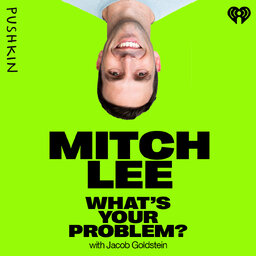How the Nerds Conquered the NBA
Rajiv Maheswaran is the co-founder and president of Second Spectrum. Rajiv and his company figured out how to turn raw sports data into useful information for coaches. Today, the company works with basketball and soccer teams in the NBA, the Premier League and Major League Soccer.
Rajiv's problem: How do you teach a computer to understand sports?
If you’d like to keep up with the most recent news from this and other Pushkin podcasts be sure to subscribe to our email list.
 What's Your Problem?
What's Your Problem?


